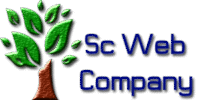Development
All Service
- Development
- Cyber Security
- Data Analysis
- Database Backup
- Digital Experience
- Digital Marketing
- Graphic Designer
- Live Broadcast
- Manage It Service
- Motion Graphics
- Network Administrator
- Photography Designer
- Server Administrator
- Server Backup
- Social Media
- Software
- UI/UX Designing
- Videographer
- Website Repair and Build

🚀 The Power and Potential of IT Development in the Digital Age
In today’s hyper-connected world, IT development is no longer a support function—it’s the engine driving innovation, efficiency, and competitive advantage across every industry. From cloud-native applications to AI-powered automation, the scope of IT development has expanded dramatically, reshaping how businesses operate and how users interact with technology.
💡 What Is IT Development?
IT development refers to the creation, deployment, and maintenance of software systems, infrastructure, and digital solutions that support organizational goals. It spans a wide range of disciplines, including:
• Software Engineering: Building scalable applications, platforms, and APIs.
• Infrastructure & DevOps: Automating deployment pipelines, managing servers, and ensuring uptime.
• Cybersecurity: Protecting systems and data from evolving threats.
• Data Engineering: Designing systems for data collection, storage, and analysis.
• UI/UX Design: Crafting intuitive, user-centered digital experiences.
🌐 Why IT Development Matters
Modern businesses rely on IT development to:
• Accelerate Innovation: Rapid prototyping and agile methodologies allow companies to test ideas and bring products to market faster.
• Improve Efficiency: Automation and integration reduce manual tasks and streamline operations.
• Enhance Customer Experience: Personalized, responsive interfaces improve engagement and satisfaction.
• Ensure Scalability: Cloud-native architectures enable businesses to grow without infrastructure bottlenecks.
• Strengthen Security: Proactive development practices help mitigate risks and ensure compliance.
🔧 Key Technologies Shaping IT Development
The IT landscape is evolving rapidly, driven by emerging technologies such as:
1. Cloud Computing
Enables scalable, cost-effective infrastructure.
2. Artificial Intelligence
Powers intelligent automation and predictive analytics.
3. Blockchain
Enhances data integrity and decentralized applications.
4. Edge Computing
Reduces latency for real-time processing.
5. Low-Code Platforms
Democratizes development and speeds up delivery.
📈 Trends to Watch
• DevSecOps: Integrating security into every phase of development.
• Microservices Architecture: Building modular, maintainable systems.
• API-First Development: Creating flexible, interoperable digital ecosystems.
• Green IT: Designing sustainable, energy-efficient systems.
• AI-Augmented Coding: Leveraging machine learning to assist developers.
🧠 The Human Side of IT
Behind every line of code is a team of thinkers, creators, and problem-solvers. Successful IT development depends not just on tools and frameworks, but on collaboration, creativity, and continuous learning. Investing in developer experience, fostering inclusive teams, and encouraging experimentation are key to long-term success.
🔮 Looking Ahead
As digital transformation accelerates, IT development will continue to evolve—becoming more intelligent, more automated, and more integrated into every aspect of life and business. Organizations that embrace this evolution will be better positioned to lead, adapt, and thrive.
Why Choose Our ScWebCompany?
Tech Services
• "Smart Solutions for a Digital World" • "Tech Services That Power Innovation" • "Your Gateway to Smarter Tech" • "Streamline. Secure. Scale." • "Next-Gen Tech Support, Today"
It Consulting
• "Empowering Your Tech Decisions"
• "Smarter IT. Better Business."
• "Strategic IT Consulting That Delivers"
• "Future-Proof Your Infrastructure"
• "Expert Guidance for Digital Growth"

Our Few Benefits
A few perks that make a big impact—smart, fast, and built for your success.
We Will Carry This Burden
- We Will Carry This Burden—so you can focus on what truly matters
- Let us handle the complexity, while you lead with clarity
- From tech challenges to strategic goals, we’re here to shoulder the load
Is My Technology Allowed On Tech?
In today’s fast-paced digital landscape, innovation thrives on collaboration and accessibility. But before launching your product or service on a tech platform, it’s essential to ask: Is my technology allowed here? At Tech, we welcome a wide range of technologies — from cutting-edge software tools and hardware solutions to AI-driven platforms and IoT devices. However, to ensure safety, compliance, and a positive user experience, all submissions must meet our core eligibility criteria: ✅ What We Accept • Legally compliant technologies that respect intellectual property rights and data protection laws. • Secure and stable solutions that do not compromise platform integrity or user privacy. • Innovative tools that contribute to the tech ecosystem — including apps, APIs, plugins, and frameworks. • Ethical AI and automation that align with responsible development standards. 🚫 What We Don’t Allow • Technologies that promote malware, spyware, or unauthorized surveillance. • Solutions that violate user rights, safety standards, or platform policies. • Products with unresolved security vulnerabilities or lacking proper documentation. How to Check If You’re Eligible If you're unsure whether your technology qualifies, we recommend reviewing our submission guidelines or contacting our support team. We’re here to help you navigate the process and ensure your innovation gets the visibility it deserves.
How to Soft Launch Your Business?
A soft launch is a strategic way to introduce your business to the market with minimal risk and maximum learning. Instead of going all-in from day one, you test your product or service with a limited audience, gather feedback, and refine your offering before a full-scale launch. 🚀 Why Choose a Soft Launch? - Minimize risk by identifying issues early - Gather real user feedback to improve your product - Build anticipation before your official launch - Test operations and workflows in a controlled environment 🧩 Key Steps to a Successful Soft Launch - Define Your Goals - Are you testing product-market fit, pricing, or user experience? - Set clear KPIs to measure success. - Choose a Target Audience - Select a small, relevant group of users or customers. - Consider loyal followers, beta testers, or local communities. - Prepare a Limited Offering - Launch with a simplified version of your product or service. - Focus on core features and value. - Collect Feedback Actively - Use surveys, interviews, and analytics to understand user behavior. - Be open to criticism — it’s your roadmap to improvement. - Refine and Iterate - Address bugs, usability issues, and customer concerns. - Polish your branding, messaging, and delivery. - Plan Your Full Launch - Use insights from the soft launch to shape your marketing strategy. - Build momentum with testimonials, case studies, and early success stories. 💡 Pro Tip: Treat your soft launch as a learning lab — not a final performance. The goal isn’t perfection, but progress.
How to Turn Visitors Into Contributors?
Every thriving digital platform starts with a simple goal: turn passive visitors into active participants. Whether you're building a creative hub, a tech community, or a collaborative workspace, encouraging contribution is key to long-term growth and engagement. 🌱 Start With a Welcoming Environment - Design for clarity: Make it easy to understand what your platform is about and how users can get involved. - Showcase community impact: Highlight how contributions shape the platform — through featured posts, user stories, or visible metrics. - Use inclusive language: Speak to beginners and experts alike. Avoid jargon that might alienate newcomers. 🎯 Lower the Barrier to Entry - Offer simple onboarding: Provide step-by-step guides, tooltips, or welcome messages that explain how to contribute. - Gamify the experience: Use badges, points, or progress indicators to reward first-time actions. - Create starter tasks: Suggest small, manageable ways to contribute — like commenting, sharing feedback, or uploading a single item. 🤝 Build Trust and Recognition - Acknowledge contributions publicly: Feature top contributors, celebrate milestones, and thank users for their input. - Enable peer support: Let experienced users mentor or guide newcomers. - Be transparent: Share how contributions are used, moderated, and valued. 🔄 Keep the Momentum Going - Send personalized nudges: Remind users of unfinished tasks or invite them to join trending discussions. - Update regularly: Keep content fresh and relevant to spark new interest. - Ask for feedback: Let users shape the platform’s evolution — it makes them feel invested.
How Can I Find My Solution?
Every challenge holds the seed of its own solution — you just need the right tools, mindset, and guidance to uncover it. Whether you're facing a technical issue, a creative block, or a strategic decision, finding your solution starts with asking the right questions. 🔍 Step Into Discovery Mode - Clarify the problem: Break it down into smaller parts. What exactly isn’t working? What outcome do you want? - Explore available resources: Use guides, tutorials, FAQs, and expert insights to expand your understanding. - Ask for help: Reach out to communities, mentors, or support teams. Collaboration often sparks clarity. 🧠 Think Creatively, Act Strategically - Challenge assumptions: Is there another way to approach this? Could a different tool or method work better? - Test and iterate: Try small experiments. Learn from what works — and what doesn’t. - Stay open to feedback: Sometimes the best solutions come from unexpected places. 🌟 Your Solution Is Within Reach Finding your solution isn’t just about fixing a problem — it’s about growth, learning, and unlocking new possibilities. Whether you're building something new or improving what exists, the journey itself is part of the answer.












